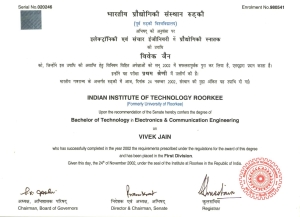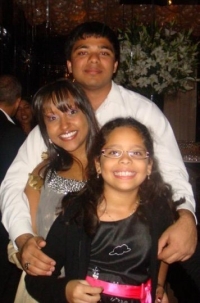From The Peopling of New York City
What is a Professional?
South Asians are often stereotyped as the "ideal minority." (Richwine, 2009) One of the reasons for this classification is that South Asians, and more specifically, Indians participate in the economy as professionals in a greater number than any other ethnic immigrant group.
For the purposes of this assessment of South Asian Professionals, professionals are defined as a person who performs an occupation that requires specialized training. In order to be considered a profession one must: (Gilbert, 1998)
1) Possess Academic Qualifications- Masters Degree, Doctoral or Law Degree
2) Expert knowledge in their field
3) Manual and Practical Skills in their field
4) High quality work
5) High Standard of Ethics
Indian Americans participate in management and professional fields in the greatest number. According to the US Census Bureau’s “We the People: Asians in the United States” from the 2000 census, Sixty percent of Asian Indians are employed in management, professional, and related occupation compared with 34 % of the total population. Additionally, Asian Indians hold the highest percentage of those who have obtained Bachelor’s degrees at 64% of any other group in the United States. In 1999, the Median family Income for Asian Indians was $70,708 and Pakistani was $50,189 compared to $50,046 for average US family. (US Census Bureau)
In Jackson Heights, the professional field is represented through the plethora of doctors and lawyers offices. Although these people may have had different backgrounds from the others who work in the area, they play an integral role in the running of Jackson Heights.
The second facet of South Asian Professionals include Information Technology Professionals among other types of professionals. Although these people do not directly play a role in running Jackson Heights, they represent a part of the clientele.
Origins of South Asian Professionals
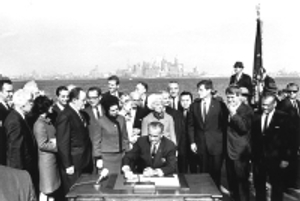
The year 1965 is key in understanding South Asian immigration. The 1965 Immigration & Nationality Act altered the way in which immigrants could come to the US. Specifically, a provision was made to provide preference to "professionals, scientists, and artists 'of exceptional ability.'"
This piece of legislation has facilitated considerable emigration from South Asia. Many who currently work as professionals within Jackson Heights and throughout the country are themselves or are direct descendants of these "professional" immigrants.
Co-ethnic Professionals in the Ethnic Community
Co-ethnic professionals provide an invaluable service to those who live and work in the Jackson Heights area. In one Indian magazine published for the merchants of the area, there were six accountants, sixteen attorneys, and six physicians who advertised.( List of Professionals )
Lawyers
Many lawyers in the area either provide immigrant specific services or services geared towards a business area.
One Jackson Heights law firm's website states: "Immigrating to the United States has become a more complicated process since the events of September 11, 2001; new federal laws and new government agencies like the Department of Homeland Security have changed the landscape significantly, and we are here to guide you through the process." (http://www.druckerlaw.net/)
Why Work in the Ethnic Community?
For many ethnic lawyers, working in Jackson Heights is a conscious decision. Many have memories of coming to the business area as children and as a result feel more comfortable working in the area.
For Sunil Agarwal, the decision to work in the area was quite simple. He said "most of my clients work here, literally down the block." He remembers coming to the area as a child to go shopping with his mother. There are also monetary benefits to working in the area. Mr. Agarwal said, "I am suffering a lot less than I would otherwise during this economic time." Sunil Agarwal is ethnically Indian and lives in Manhasset Hills, Long Island. Although he was born in India and has liked in England, Mr. Agarwal considers himself American more than any other type of identification. He practices law in Queens and Long Island and specializes in real estate and litigation. ( Interview with Sunil Agarwal )
For others, the draw to work here is much more personal. Maryanne Tharappel, a first year law student studying at Brooklyn Law School from Kerala, India understands the needs that new immigrants have. "As an immigrant myself and part of a large community; this field of law is an extremely important issue in the political climate. Advocates who are passionate are necessary and a commodity for all sides of the argument." Although, Ms. Tharappel did not express an interest in gearing her services specifically towards the South Asian community. "I have always been taught and reminded to explore, understand, and respect my culture but that was constantly balanced with exploring, understanding and respecting others. I want to serve peoples need; not any particular race of people." ( Interview with Maryanne Tharappel )
Benefit of Co-ethnics
Co-ethnic lawyers provide culture capital to their clients. Often, people turn to attorneys at their most vulnerable time. Attorneys are "trained in counseling people through the legal process to deal with conflicts in a civilize manner." ( Interview with Sunil Agarwal )
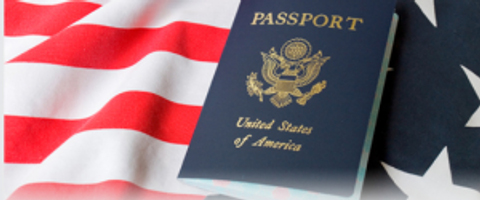
Especially in a foreign country, it is often more comforting to speak with someone who personally understands the situation. Co-ethnic attorneys are often able to communicate with their clients more comfortably people they are familiar with the clients language. Additionally, specifically in dealing with immigration, an immigrant attorney may be more understanding because they have gone through the same situation in the past.
Comfort at What Cost?
There is a downside to this comfort. Mr. Agarwal said, "They would probably treat a non-Indian better. They would act nicely and listen and pay the expected rate. To me, they are like, you are my brother you can trust me, can’t you give me a less expensive rate. If you were actually my brother I would not charge you but you are not. They have this idea of the 'Desi Discount' you know we are all Indian so my rates for co-ethnics should be less, but that does not make sense. You pay for what you get. If you want a good attorney then you will have to pay." ( Interview with Sunil Agarwal )
Doctors
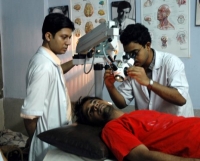
Unlike lawyers, doctors play a much more visible role in the community. In Jackson Heights, doctors' offices can be found in traditional office buildings, store fronts, and even in more residential buildings.
Those looking for medical service in the area could find a doctor to provide prenatal care, remove a hang nail, or even administer psychological care.
Why a Doctor?
Many cite pressure within the South Asian community as one of the main reason they chose to pursue medicine as a profession. For others, it seems like a logical choice. Once these people become doctors, they often target the South Asian community or merely appeal to them.
In this clip from Harold and Kumar Go to Whitecastle, Kumar, the son of South Asian immigrants must decide between entering medical school as his father wishes, or pursuing a more enjoyable career.
For others, it seems as if there is more pressure to pursue higher education in America than there was back in India. RT, an Indian immigrant working for a NYC Health company, "It is different in India than it is here. In India, education is much cheaper or even free. A greater percentage of people can pursue higher education because there is no financial limitation. There is definitely pressure from your family and your community." ( Interview with RT )
For Dr. Jagjit Singh, a Punjabi physician who works in Queens, pursuing medicine was his key into the United States. ( Interview with Dr. Jagjit Singh )
For Maryanne Tharappel, the choice was between medicine and law. She considered pursuing medicine as her parents both did, even go as far as applying to medical school. In the end though, Ms. Tharappel attended law school. ( Interview with Maryanne Tharappel )
South Asian Patients
For many South Asians, US health facilities and practices seem quite foreign. Many practices that are common to Americans may even be offensive to some South Asians.
Tend to place the medical profession in high regard and so are likely to seek medical help rather than postpone it. Questions around sex and sexuality must be carefully asked regardless of generation, gender and especially if other family members are in the room. Same sex care providers a usually preferred, especially so for women. Blood transfusions & transplantations in general are acceptable. For Muslims, the LEFT hand is considered less clean than the right hand. It is a sign of respect to use right hand when palpating or administering medications. Cultural model is must less individualistic and more centered on the family. Typically family is often involved in the decision making or may even make the decisions for the patient. For cultural reasons, some women may prefer to have a male protector sign consent forms—Can become a legal liability issue to consider. It is considered a SERIOUS cultural faux pas to ask widowed Muslim women about sex.
For Hindus, Eating beef is prohibited among Hindus and most are vegetarian and this may need to be explored when addressing certain medical issues. Second generation Indian Americans may eat meat. May refuse medication in capsule form since beef by products may be used for the capsule component. Fasting is common and needs to be considered when providing education about disease management (i.e. diabetes). (Community Healthcare Network)
These concerns must be taken into account while treating South Asian patients.
Other Professionals
In the past few years, specifically as the need for technical professionals grew in the United States, there has been a large influx of professional immigration.
Many of the professionals immigrants came to the United States through H1b visas. The H1b process requires a potential recipient to research potential jobs from their home country. Then, the applicant must go through a long process. According to Nirav Kavi, an IT professional currently working in the New York: ( Interview with Nirav Kavi )
First of all, the job is only available to a foreign worker if no American wants to fill the job.I had to hire a lawyer to verify my credentials. Then, I was sponsored by a US company to come and work here. There was a long process of verification and cross checking that I was responsible for financing. I can only stay here as long as I have a job. If I was to be fired from this company, I would need to find another job and another employer to sponsor me or else my wife and I would have to go back to India
The Future of Professional Immigration
With the current economic climate, the future of professional immigration is in question. One of the key factors in securing an H1b visa, is that the job has been posted in the United States and no Americans have wanted the job. Now, with growing unemployment, it has become more difficult for potential H1b applications to find jobs that require their professional skills that are not wanted by Americans.
In this video, an Indian news station addresses concerns over the future of Professional Visas.

